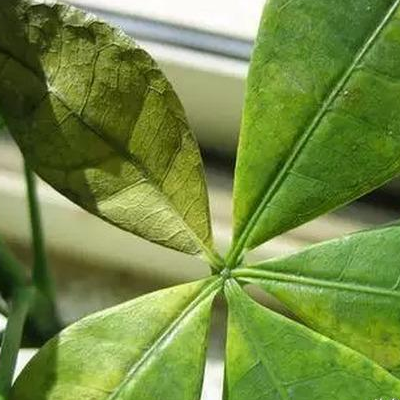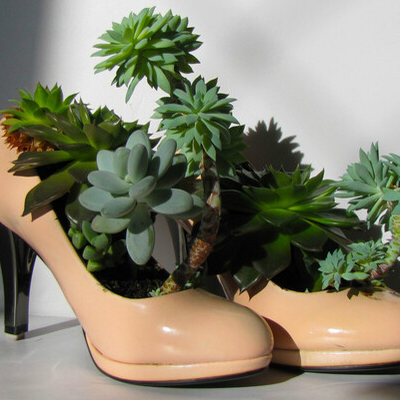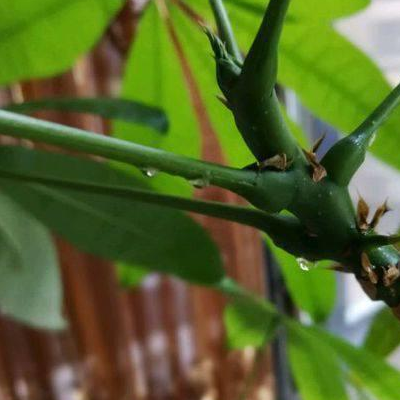What are the symptoms of flower diseases?
Flowers, this is a lot of people like farming, but when flowers are sick, it is a headache, what are the symptoms of this flower physiological disease? What to do about the physiological diseases of flowers:

What are the symptoms of flower physiological diseases:
The first is the discoloration of leaves. The leaves become lighter, or turn yellow or white, or produce red, yellow or purple spots. If some nutrient elements are insufficient, it is very easy to cause discoloration of plant leaves. For example, when the plant is deficient in iron, the new leaves will yellowing; manganese deficiency will cause mesophyll yellowing to form small yellow spots; lack of phosphorus and potassium will also make the leaves green and withered.
The second is necrosis. There are dead spots in the local necrosis of the plant. For example, the most common symptoms of cold injury on flower plants are discoloration, necrosis and spots on the surface; lack of nutrient element boron will make the base of tender leaves corrupt and necrotic.
The third is falling leaves, flowers and fruits. For example, drastic changes in temperature and light intensity will cause fallen leaves; if there is a lack of nutrient element phosphorus, there will be early defoliation; if there is a lack of phosphorus, there will also be the phenomenon of falling flowers and buds; after flower bud differentiation, improper watering and sudden dry and wet soil will also easily cause falling buds and flowers.
The fourth is dwarfing, overgrowth, leaflet or small fruit. For example, if there is a lack of nutrient element magnesium, the plant will become dwarfed; without the nutrient element sulfur, the plant will also become short and the leaves will become slender; without the nutrient element nitrogen, the leaves will become smaller, but if there is too much nitrogen, it will cause the plant to grow too much; if the light is insufficient, the plant will also grow too much.
The fifth is wilting. For example, if the plant is underwatered, it will produce wilting, on the contrary, if the basin soil is stagnant water, the root system of the plant will be anoxic, which will affect the respiration and the water absorption of the root system, and the plant will also wilt.
What to do about the physiological diseases of flowers:
1. If the young leaves turn yellow, or the lower leaves curl and fall off, the most common reason is too much watering. However, it must be noted that element deficiency is also easy to make young leaves yellow. for example, iron deficiency often makes the leaves of flowers in acid-loving soil yellow and white, or the mesophyll turns yellow and the veins are still green.
two。 If the young leaf tip is scorched, it is mostly due to too strong light, or too little watering, or because the air is too dry. The curling of the edges of the leaves is mostly caused by excessive dryness of the air.
3. If the leaf edge of the old leaf is scorched, it is often caused by too much fertilization or improper watering.
4. If the leaves are slender, crisp and tender, and the edges are yellow and zoom, it is mostly due to lack of light, dry air, wet basin soil, lack of nutrients and other reasons, this phenomenon is most obvious in Magnolia.
5. If there are brown spots or brown edges on the leaves, it is mostly caused by sunburn or drought. For example, in the north, this phenomenon is most likely to occur on the newly germinated young leaves of Magnolia, Milan, Michelia and other flowers that have just come out of the house in spring.
6. If the leaves fall suddenly, it is mainly due to the sudden rise and fall of the temperature, or the light changes too much. For example, some foliage plants planted in places with strong light suddenly move into indoor places where there is not enough light, and the leaves will soon appear. Some flowers, such as Magnolia, Michelia, etc., when the temperature difference between day and night is too large, it is easy to cause leaves to fall off.
The symptoms of flower physiological diseases and treatment methods are introduced here, this is a long experience!
What are the symptoms of physiological diseases of flowers?
In the process of growth and development of flowers, the diseases caused by unsuitable environmental conditions are called physiological diseases. The diseases caused by lack of nutrients are mainly dwarfing and chlorosis. The lack of nitrogen in the plant can not guarantee its high growth; because the soil is too alkaline (north) or too acidic (south), the plant is weak and the leaves are scorched; lack of phosphorus, potassium and other trace elements will also make flowers green and wither. Lack of water in the process of flower growth and development will cause withering and dwarfing; too much water will hinder root respiration and rot, and plants will wither and yellow. Therefore, when the leaves are yellowing and wilting, it is necessary to make a careful diagnosis before taking measures.
Jasmine in the morning
The temperature of soil and air is too high or too low, which can also cause physiological diseases. If the soil temperature is too high, the damaged part softens, dries up and shrinks, especially the flowers with thin epidermis of shallow roots are vulnerable. Sunburn caused by excessive light forms a water-immersed spot on the sunny side of the base of the stem and slowly fissures. Diseases caused by low temperature (such as frost injury, frost injury, etc.) are generally easy to occur when there is a large temperature difference between day and night in early spring, and the damaged flowers and leaves, flowers and fruits are yellow, dry, shedding or leaves and young stems are curled, while flowers originating in frost-free areas, such as Magnolia and jasmine, die after frost. In addition, the harmful exhaust gases from factories and cars will also make the leaves discolored and fall off.
What is the difference between flower symptoms and symptoms? Where are the physiological diseases of flowers?
The abnormal characteristics and phenomena caused by the external morphology of flowers after infection are usually called the symptoms of the disease. For many diseases caused by pests (pathogens), the symptoms can be divided into symptoms and symptoms. The disease condition refers to the pathological characteristics of the external organs of the infected plant itself, and the disease refers to some or some structural characteristics of the pathogen produced on the disease site of the plant. For example, camellia anthracnose, the center formed on the leaf is gray-white, the edge is purple-brown near-round spot, which is the symptom of the disease, while the small black spot formed on the spot in the later stage of the disease is the disease.
In the process of growth and development of flowers, the diseases caused by unsuitable environmental conditions are called physiological diseases. The diseases caused by lack of nutrients are mainly dwarfing and chlorosis. The lack of nitrogen in the plant can not guarantee its high growth; because the soil is too alkaline (north) or too acidic (south), the plant is weak and the leaves are scorched; lack of phosphorus, potassium and other trace elements will also make flowers green and wither. Lack of water in the process of flower growth and development will cause withering and dwarfing; too much water will hinder root respiration and rot, and plants will wither and yellow. Therefore, when the leaves wilt, it is necessary to make a careful diagnosis before taking measures.
The temperature of soil and air is too high or too low, which can also cause physiological diseases. If the soil temperature is too high, the damaged part softens, dries up and shrinks, especially the flowers with thin epidermis of shallow roots are vulnerable. Sunburn caused by excessive light forms a water-immersed spot on the sunny side of the base of the stem and slowly fissures.
Diseases caused by low temperature (such as frost injury, frost injury) are easy to occur in early spring when there is a large temperature difference between day and night, and the damaged flowers and leaves, flowers and fruits turn yellow, wither, fall off or leaves and young stems curl, while flowers originating in frost-free areas, such as Magnolia and jasmine, die after frost.
In addition, harmful exhaust gases from factories and automobiles will also make the leaves discolored and fall off. The experience is for reference only. If you need to solve specific problems (especially in legal, medical and other fields), you are advised to consult professionals in relevant fields in detail next.
- Prev

How to change potted plants? what about diseases and insect pests?
Potted plants, this is a lot of friends like breeding, in the big city balcony only cultured potted plants, potted plants how to change pots? Potted plant diseases and insect pests how to do: potted plants how to change pots: potted flowers continue to grow, grow to a certain extent, there is not enough space in the flowerpot, you need to change pots
- Next

How to deal with the mucus in the flow of rich trees? how to eliminate scale insects completely?
Rich tree, this is a lot of people like farming, how to raise something wrong, rich tree flow mucus how to deal with? Scale insects how to completely eliminate: home potted rich tree exudate dewdrop-like mucus, there are small white spots, there are spots on the leaves, what is the reason for this? The rich tree may be affected by insect pests.
Related
- Fuxing push coffee new agricultural production and marketing class: lack of small-scale processing plants
- Jujube rice field leisure farm deep ploughing Yilan for five years to create a space for organic food and play
- Nongyu Farm-A trial of organic papaya for brave women with advanced technology
- Four points for attention in the prevention and control of diseases and insect pests of edible fungi
- How to add nutrient solution to Edible Fungi
- Is there any good way to control edible fungus mites?
- Open Inoculation Technology of Edible Fungi
- Is there any clever way to use fertilizer for edible fungus in winter?
- What agents are used to kill the pathogens of edible fungi in the mushroom shed?
- Rapid drying of Edible Fungi

